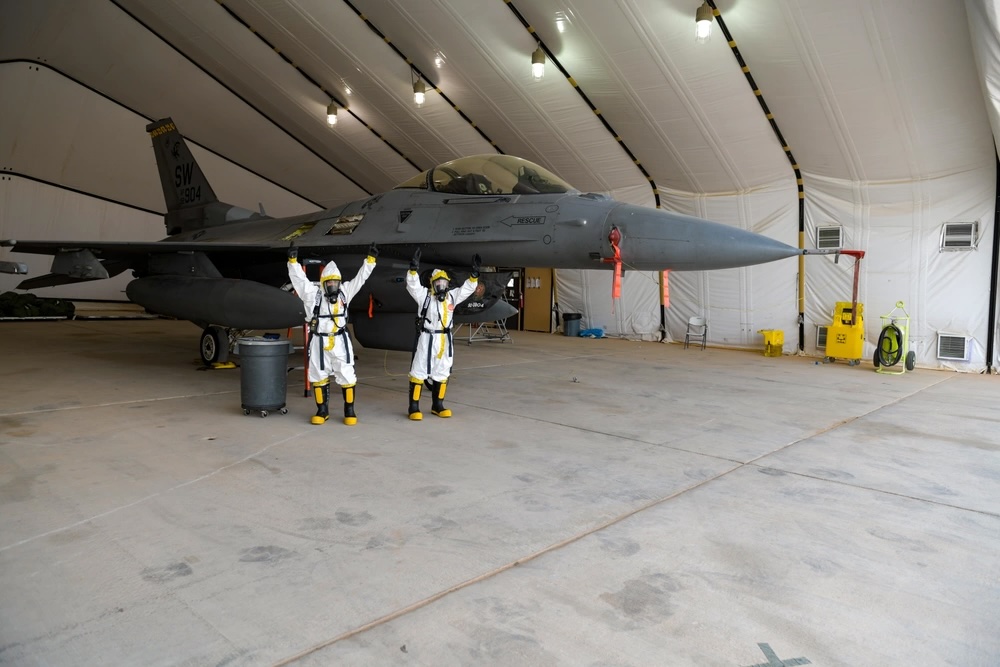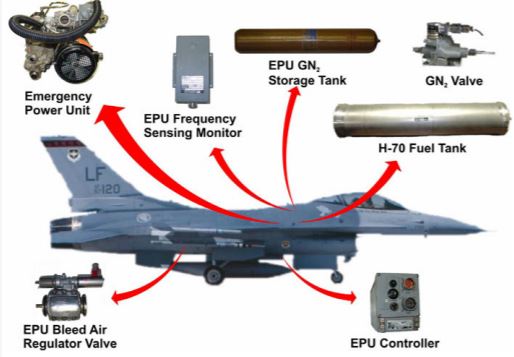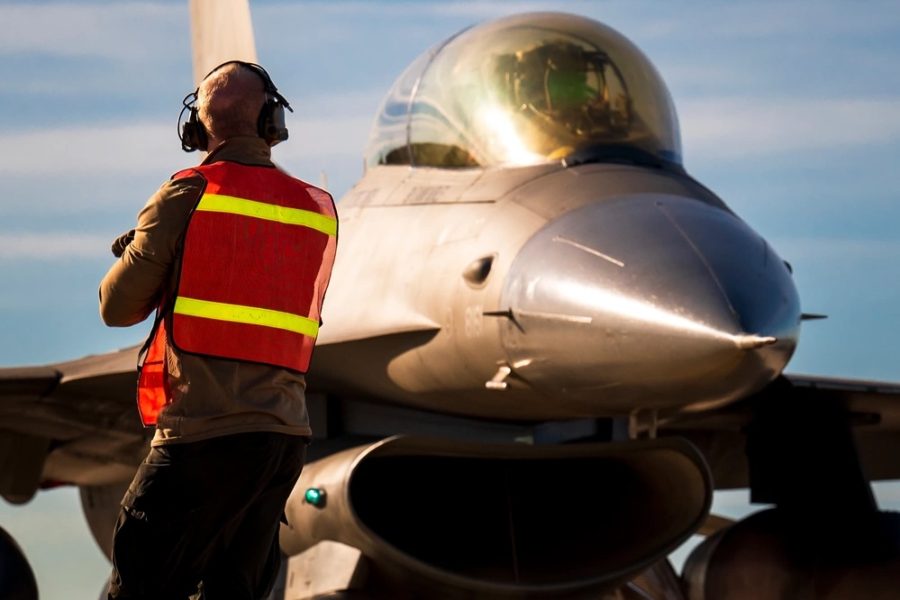Thirteen Airmen at Luke Air Force Base, Ariz., made a brief visit to a nearby hospital on Aug. 20 amid concerns that the emergency power unit of the F-16 fighter jet they were working on had accidentally activated.
According to a base release, the emergency power unit (EPU) did not activate, and all 13 Airmen were evaluated and released.
Had the EPU activated, it would have been serious cause for concern—the F-16 unit is powered by hydrazine, a “corrosive, toxic, and highly flammable” chemical compound that is also highly carcinogenic, according to the Department of Defense and the Air Force.
Airmen were conducting routine maintenance checks on an F-16 at about 4:40 p.m. when they declared a ground emergency over concerns that the jet’s EPU was activated, according to a base release.
The EPU provides emergency power for F-16 flight controls so pilots can land the aircraft safely if the jet’s other systems fail midflight. The EPU and the hydrazine fuel tank are located aft of the cockpit, so pilots are relatively isolated from the system, but ground maintenance requires extensive safety measures.
“If you touch it, it absorbs very quickly and it’s very cancerous,” Staff Sgt. Christopher Glover of the 49th Component Maintenance Squadron at Holloman Air Force Base, N.M., said in a 2023 press release. “That’s why we wear our protective gear such as gloves, boots, a full suit, FireHawk mask, and air bottle.”

Emergency teams determined there was no activation of the EPU at Luke, but 10 Airmen were taken to a local hospital as a precaution, the base explained. The ground emergency ended at about 5:22 p.m. after responders determined no hydrazine had been released, despite social media speculation to the contrary.
But just four hours later, at about 9:45 p.m., base personnel declared a second ground emergency, concerned again that the EPU for the same F-16 may have activated. This time three Airmen were taken to a local hospital out of an abundance of caution. They were also evaluated and released. The response team again determined there was no release of hydrazine and the emergency ended at about 10:30 p.m.
“The aircraft will not return to service until further testing has been conducted,” the base said in its statement.
A training base, Luke is where thousands of Air Force pilots first learn to fly the F-16 and F-35 fighter jets. The 56th Operations Group, which runs the fighter training mission, is the largest fighter group in the Air Force, according to the base website.

